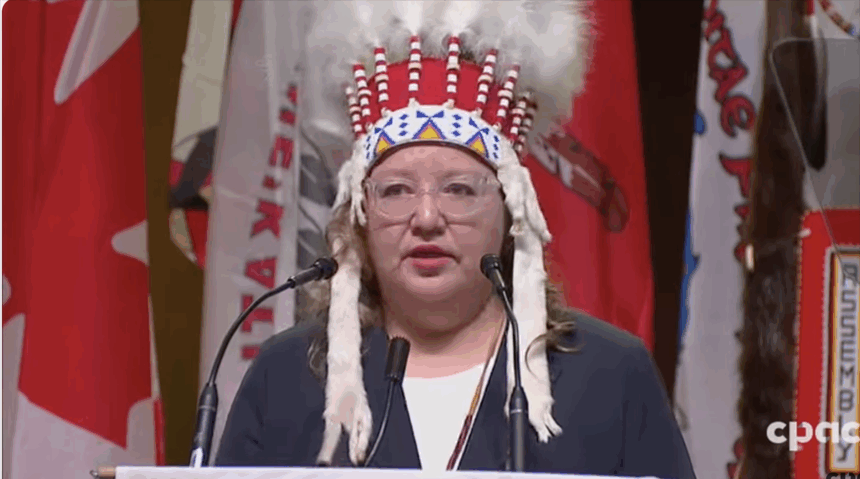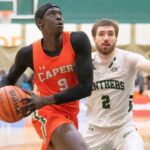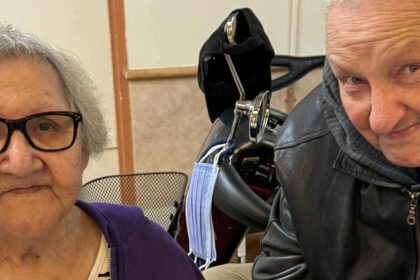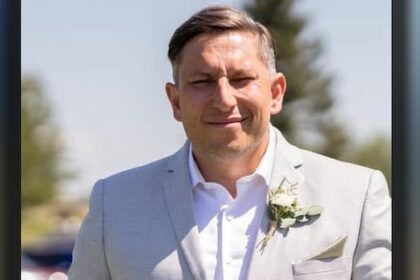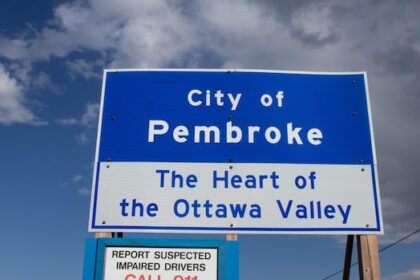AFN National Chief Cindy Woodhouse Nepinak endorses legislative amendments to the Indian Act that repeal the Second Generation Cut-Off Rule and introduce a system whereby an individual who is a direct descendant of a status Indian, or an individual entitled to be registered as a status Indian, would be eligible to obtain status. By John Wirth (ANNews) – Bill S-2, officially An Act to amend the Indian Act, is a reintroduction of bill C-38, which never became law before the federal government dissolved. As of October 21, 2025, S-2 is before a Senate committee. It proposes amendments to four key areas of the Indian Act: enfranchisement, voluntary deregistration, natal Band reaffiliation, and outdated language. Each of these changes carries real implications for how Indigenous identity is recognized in Canada Speaking on behalf of The Assembly of First Nations, National Chief Cindy Woodhouse Nepinak, “endorses legislative amendments to the Indian Act that repeal the Second Generation Cut-Off Rule and introduce a system whereby an individual who is a direct descendant of a status Indian, or an individual entitled to be registered as a status Indian, would be eligible to obtain status.” Enfranchisement and Gendered Discrimination Historically, the Indian Act imposed deeply gendered restrictions. Prior to 1985, Indigenous women who married men from other First Nations or non-Indigenous men often lost their home Band membership or status, respectively. This process, called “enfranchisement,” strips them of Indian status, rights, and title to their lands, with no recourse until Bill C 31 partially updated the law. The law specifically targeted matrilineal descent, the mother’s bloodline, despite the shared Indigenous cultural traditions that emphasize family connection through this way. Band membership structures leveraged section 10 of Bill C-31, for custom membership code, to deregister women and their children, effectively limiting how Indigenous identity could be passed to future Generations. Now, natal Band reaffiliation under Bill s-2 gives descendants of these women a clearer path to register with the federal government, correcting some of these past injustices. But, it does so acknowledging that an individual may only be part of one Band or the other under federal Band membership codes/ section 11 of Bill C-31. Nepinak points out that, “Since 1985, every few years, there is more litigation and then another bill to amend the registration provisions of the Indian Act, often with little direct consultation with rights holders who bear the brunt of the consequences with no additional resources or land to accommodate new registrants.” Voluntary Deregistration and the Right to Return Bill S-2 also recognizes that some individuals may wish to voluntarily deregister from the federal Indian register or from their Band membership lists. If they, or their descendants, later come to regret that decision, the law currently allows them to re-register at any time. This provides a legal mechanism to reclaim status that had been lost or at least until Parliament decides to close the option. Nepinak lays out the federal strategy that, “First, the Crown only takes legislative action when forced by successful litigation brought by First Nations plaintiffs who spend years in litigation. Secondly, the government selects the most minimal, restricted legislative step possible, and no more, to address the human rights violations being raised. It simply waits for the next piece of successful litigation respecting the discrimination that the Crown knows it is has not reached.” While this flexibility may seem progressive, it raises complex questions. Any clearer path for losing status must be considered carefully, as it potentially disrupts Collective negotiations tied to registered membership, treaty rights, land claims, and federal funding formulas. The black and white distinction between Indian and enfranchised echoes earlier policies, like the controversial 1969 white paper, that threatened to eliminate the “Indian” as a special legal status to achieve what it sees as equality for First Nations communities. The second generation cut off and fractured identity Since 1985, Indigenous Canadians have navigated a fractured legal identity. The government never fully reversed enfranchisement and instead introduced what we call the second generation cut off, a strict two generation limit on claiming Indian status. Men and women are equally affected. In an example, Nepinak asserts, “I’d like to remind this House that First Nations people are the only people around the entire world who are legislated in this way and told who their members are or are not. The Inuit, Métis, and all other groups of people (e.g., Europeans, Asians) in Canada are not subject to this. There’s something wrong that it is year 2025 and we are still having these same discussions. We need to work together to end the discrimination in the Indian Act.” To illustrate, a Canadian who has a child with an American can pass on dual citizenship indefinitely. but Indigenous children in the same situation risk losing Federal recognition by the second generation. This law disproportionately affects Urban Indigenous populations, who often live and work outside the reserve community. While it does not erase ancestry or culture, it enforces arbitrary limits on Indigenous identity, restricting the natural transmission of Heritage across generations and dismantling solidarity. In reality, it is not an easy prospect to support the inclusion of every 6(2) “Indian” into a Band because this would dilute the per capita funding for many bands as the AFN National Chief has addressed. “Bill S-2 continues the legacy,” Minister of Indigenous Services of Canada Gull-Masty announces to the public. “[Bill S-2] was developed from extensive engagement efforts, including over 50 virtual sessions held with First Nations, Indigenous organizations, and other partners.” They elaborate that, “approximately 3,500 individuals could become newly entitled to registration as a result in the first five years after it passes.” Community Support and Advocacy In response to these structural barriers, organizations like Freehorse Family Wellness Society, located in Edmonton and Indspire step in to provide education, cultural support, and advocacy for members excluded by Band politics. Without such interventions, many Indigenous people would be left navigating a complex maze of federal and ban laws on their own. In this legal and bureaucratic struggle, both the law and the Band played decisive roles in determining an individual’s future. Often, one side must yield. John Wirth is a Local Journalism Initiative Reporter.
Thursday, 25 Dec 2025
Canada – The Illusion
Search
Have an existing account?
Sign In
© 2022 Foxiz News Network. Ruby Design Company. All Rights Reserved.
You May also Like
- More News:
- history
- Standing Bear Network
- John Gonzalez
- ᐊᔭᐦᑊ ayahp — It happened
- Creation
- Beneath the Water
- Olympic gold medal
- Jim Thorpe
- type O blood
- the bringer of life
- Raven
- Wás’agi
- NoiseCat
- 'Sugarcane'
- The rivers still sing
- ᑲᓂᐸᐏᐟ ᒪᐢᑿ
- ᐅᑳᐤ okâw — We remember
- ᐊᓂᓈᐯᐃᐧᐣ aninâpêwin — Truth
- This is what it means to be human.
- Nokoma


